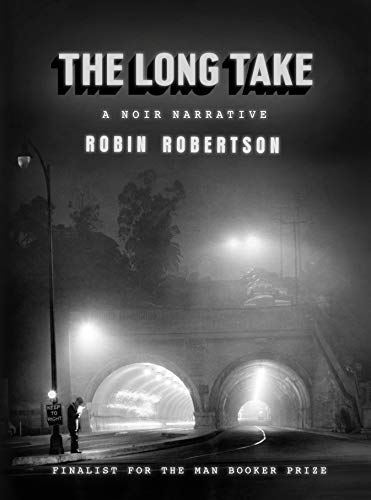The Long Take
In this McCarthyism-era tale, our protagonist is a Nova Scotian named Walker who is trying to find a place to forget the horrors of the war. Instead of returning to his family on their quiet island, he heads to New York City, and later San Francisco and Los Angeles. He finds steady work in Los Angeles as a writer for the Press and soon discovers his niche in stories about the city people—those who live on the streets or in blighted buildings, those who were in the wars (The Great War, WWII, and the Korean War) and those who were pushed from other places with no resources.
It is the time of film noir, and there is plenty of name-dropping and descriptions of the streets used as movie sets. Yet more than a recap of popular movies, this book reads like a bitter love story to the memory of a changing city. Buildings are being dismantled as parking lots and highways are being installed. The very landscape is changing drastically—hills leveled, trees uprooted, and the street people removed one way or another. This parallels Walker’s gradual decline in mental state. That he has PTSD is apparent early on, but the author balances this condition perfectly with his present experiences, likening what would be mundane occurrences to harrowing triggers. As the city buildings fall, so too does Walker.
Written in verse and further separated by text style, this narrative will appeal to those who enjoy an out-of-the-ordinary read—more especially as this one breaks with the overly saturated World War theme while still dealing with its aftereffects. Included is a detailed map of downtown Los Angeles (1948-1958) and photographs throughout. This is a thought-provoking and original take on mid-century America. Recommended.










